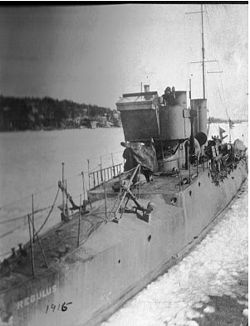Royal Danish Navy

- 1879 Torpedobaad Nr. 4
- 1880 Torpedobaad Nr. 5
- 1881 Torpedobaad Nr. 6
- 1882 Hajen
- 1882 Søulven
- 1882 Sværdfisken
- 1883 Delfinen
- 1884 Hvalrossen
- 1887 Støren
- 1887 Søløven
- 1888 Narhvalen
- 1888 Havhesten
- 1891-1919 Springeren
- 1893 Nordkaperen
- 1893 Makrelen
- 1896 Hajen
- 1896/98 Havørnen
- 1896/98 Søbjørnen
- 1907-1932 Ormen

